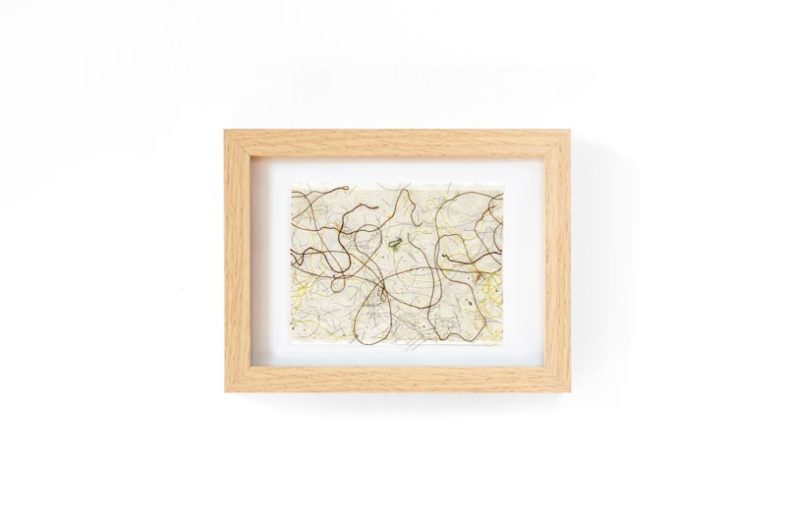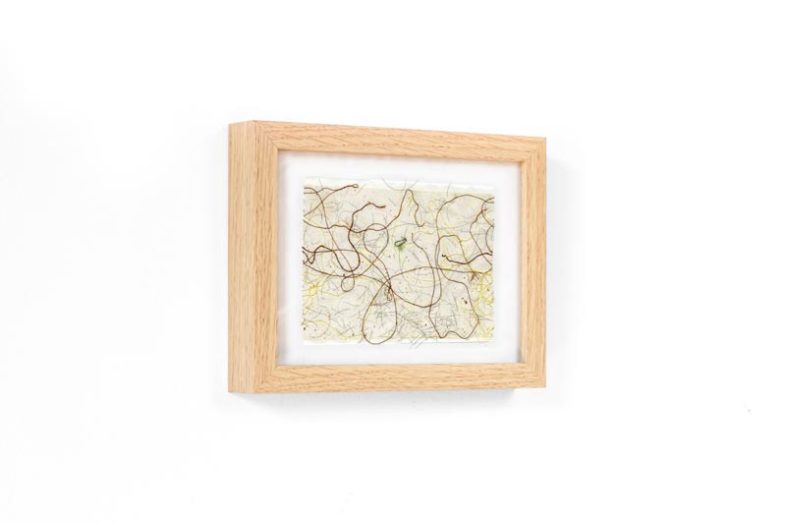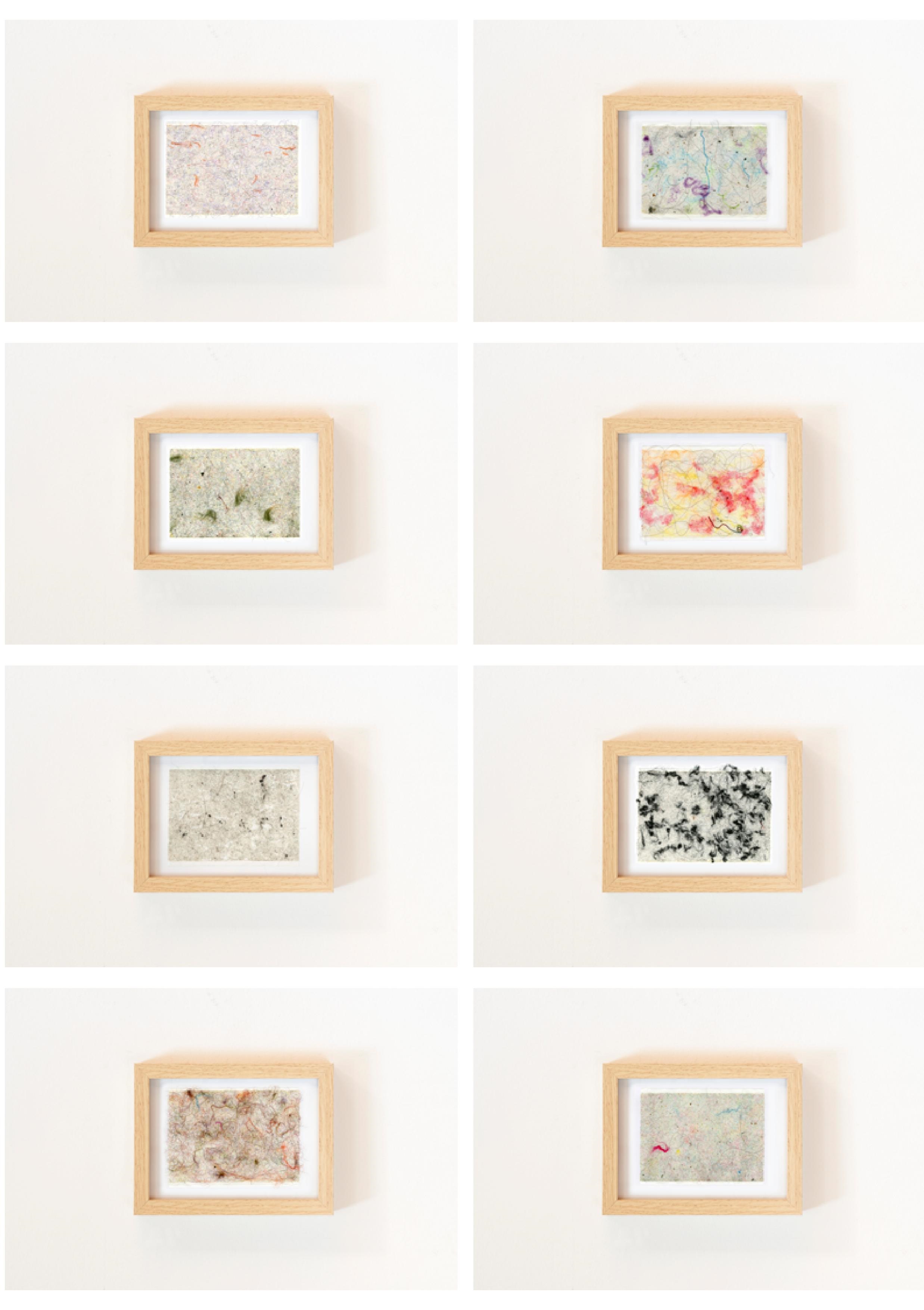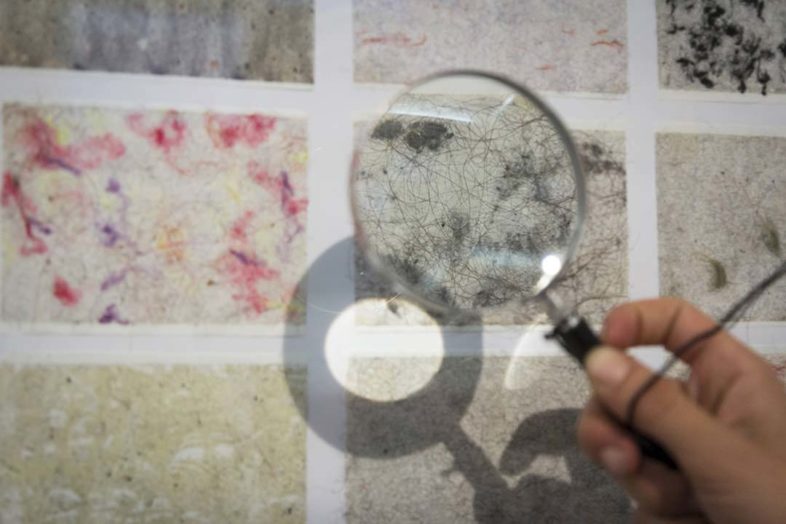

Within the cycle was exhibitedcycle, the Strappi (Torn Traces) series delves even deeper into the relationship between the micro and the macro, between what is discarded and what, unexpectedly, reveals new layers of meaning. These works originate from the adhesive sheets of lint rollers, used not on clothing but on surfaces like carpets and floors to collect the widest possible variety of micro-residues from human life. Dust, hair, and tiny fragments of dead skin cells become trapped on the adhesive surface, forming a chaotic and random aggregation where elements layer upon one another.
The use of a magnifying lens becomes an act of revelation: what appears to the naked eye as an indistinct accumulation is unveiled as a complex composition, a sort of landscape where the infinitely small expands to evoke cosmic dimensions. As in the other cycle was exhibitedseries, this work goes beyond an aesthetic exploration of waste, reflecting instead on individual inhibitions and resistances. The forced adhesion of elements to the sticky surface becomes a metaphor for what leaves a mark on us, for what we unknowingly collect and what defines us, even when we prefer to ignore it.
Il lavoro risulta pienamente coerente con l’opera di Piero Manzoni, nel cui studio è stato esposto l’intero ciclo Scorie Microcosmiche.
As in the other series, the observer plays an active role: approaching, investigating, and focusing means confronting what is usually dismissed. Perception is overturned, and what initially seems like chaos transforms into revelation—a journey between the infinitely small and the infinitely vast, between the personal and the universal.















Scorie Microcosmiche, Strappi (Microcosmic Slag, Torn Traces)
13 x 9,5 cm cad.
Considerati antiestetici, antigienici, alle volte superflui e per tanto imbarazzanti, provenienti da qualsiasi parte del corpo, sia i capelli che i “peli” hanno da sempre avuto un impatto differente nell’opinione dell’uomo. Ad esempio il “pelo pubico”, considerato come uno dei caratteri sessuali più importanti, segna la maturità sessuale di entrambi i sessi e in particolar modo segna la fertilità e la carica erotica del sesso femminile. Difatti già dalle figure idealizzate delle donne del Rinascimento i peli venivano rappresentati solo da una ombra, poiché già da allora il pelo pubico femminile fu associato a opere pornografiche, così è stato fino al 1866 con L’origine du monde di Courbet, in cui i tabù sessuali continuarono a persistere fino ai nostri giorni. Nonostante negli anni Sessanta si cercò di superare questo tabù del “pelo pubico”, personalità come la stilista Mary Quant fece sapere che si era tagliata i peli pubici a forma di cuore, oppure negli anni Ottanta, con la serie di Helmut Newton denominata “Big Nudes” (1981), il quale mostrava modelle con tacchi alti e peli pubici piuttosto imponenti. Ancora oggi si associano i peli, sia del pube che i capelli a un qualcosa da celare o da cui ognuno di noi se vuole liberarsi dal male se ne deve disfare.
Come la Gugliotta, anche altri artisti prima di lei hanno indagato e persino usato come mezzo, come soggetto e fatto oggetto delle proprie opere questi residui di corpo. Già dall’opera precorritrice Déjeuner en fourrure (1936) di Oppenheim a Behold (2009) di Sheela Gowda, oppure all’opera Hair Necklace (1995) di Mona Hatoum in cui grovigli di peli e capelli diventano oggetti da esperire esteticamente, in quanto sono diventati sculture, istallazioni, soggetto principale di una fotografia e forme libere e iconiche come pitture informali e segniche alla Dubuffet.
Danilo Lo Piccolo
